Introduction
Introduction
Talos Energy and their partners, Premier Oil and Sierra Oil and Gas, announced a world-class oil discovery at the Zama prospect, Block 7, offshore Mexico, in 2017 (Figure 1). The discovery was made in late Miocene submarine fan sandstone reservoirs within a three-way dip structure sealed against a salt ridge (Offshore Technology, 2017). The prospect was supported by a well-defined flat spot on 3D seismic with amplitudes that had good conformance with structural contours (Ambati, et al., 2018). The discovery is estimated to have P90 to P10 gross reserves ranging between 1.4 and 2 Bboe (Offshore Technology, 2020) and a 2C to 3C range for recoverable resources ranging from 0.67 Bboe to just over 1 Bboe (Talos Energy, 2020).
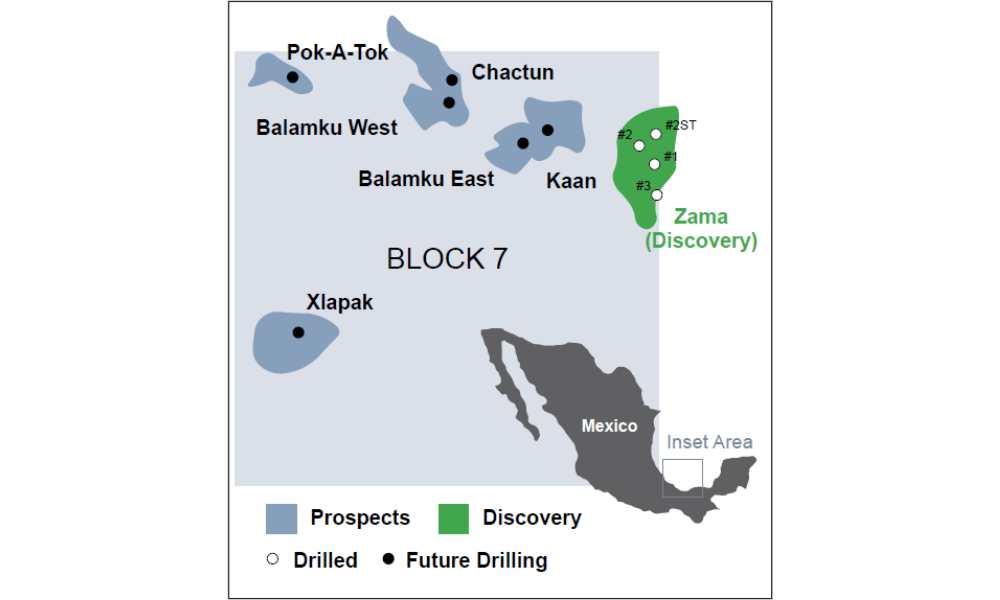
Figure 1 – Location of the Zama discovery (Offshore Magazine, 2019).
The DAKS™ Analogue Workflow (Figure 2) has been used to plan an optimal hydrocarbon recovery strategy for the Zama discovery, give greater confidence during development planning and benchmark both recovery factor and development concepts. Benchmarking using analogue intelligence serves to increase decision quality and is a useful tool to increase ultimate recovery by ensuring an appropriate development.
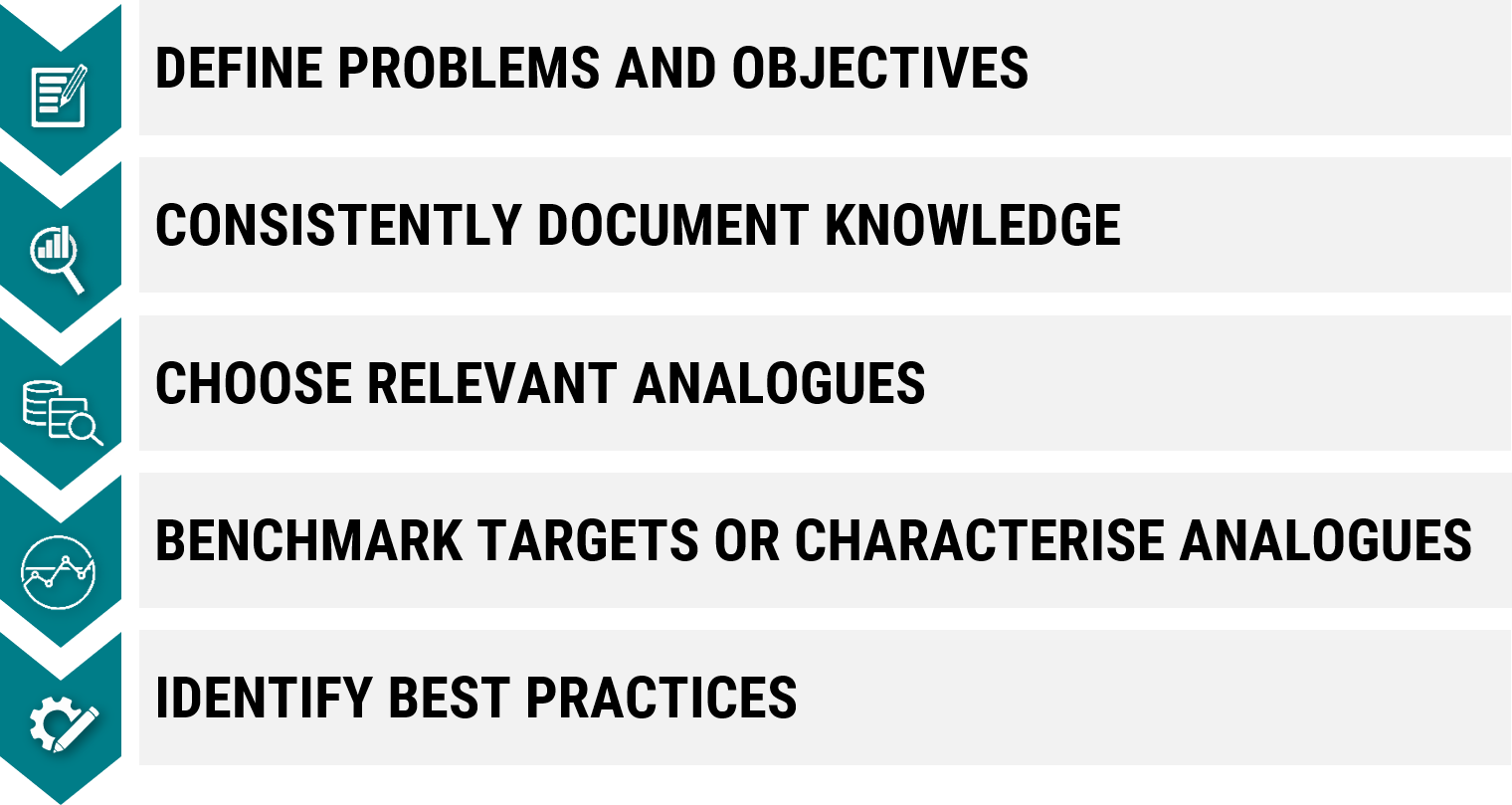
Defining Problems and Objectives
Defining Problems and Objectives
Key questions that can be answered for Zama using analogue intelligence:
- What is an optimal recovery strategy for the Zama field?
- What is the ultimate recovery potential of the Zama discovery?
- What are possible reservoir management best practices to consider?
Consistently Document Knowledge
Consistently Document Knowledge
Based on press releases from the operator (Ambati, et al., 2018; Talos Energy, 2018), both text and numeric parameters have been standardized and classified using the consistent rules of C&C Reservoir’s comprehensive classification scheme (Table 1). This standardization ensures that accurate comparisons can be made using DAKS™.

Table 1 – Knowledge standardization of key geological and engineering parameters for the Zama discovery.
Choose Relevant Analogues
Choose Relevant Analogues
Given the objective of this study, the following selection criteria were used to identify appropriate analogues:
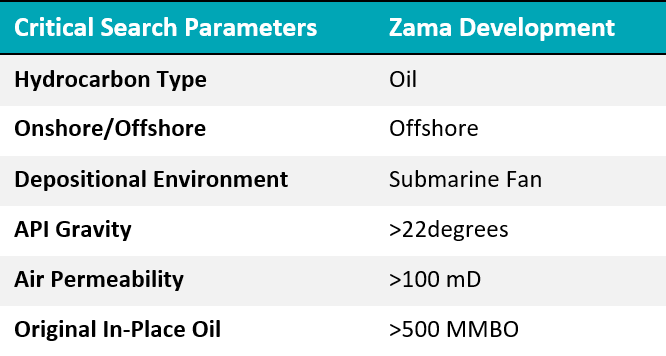
Table 2 – Analogue search matrix for the Zama Field.
25 applicable global analogues were selected using the search criteria relevant to the Zama development challenges (Figure 3).
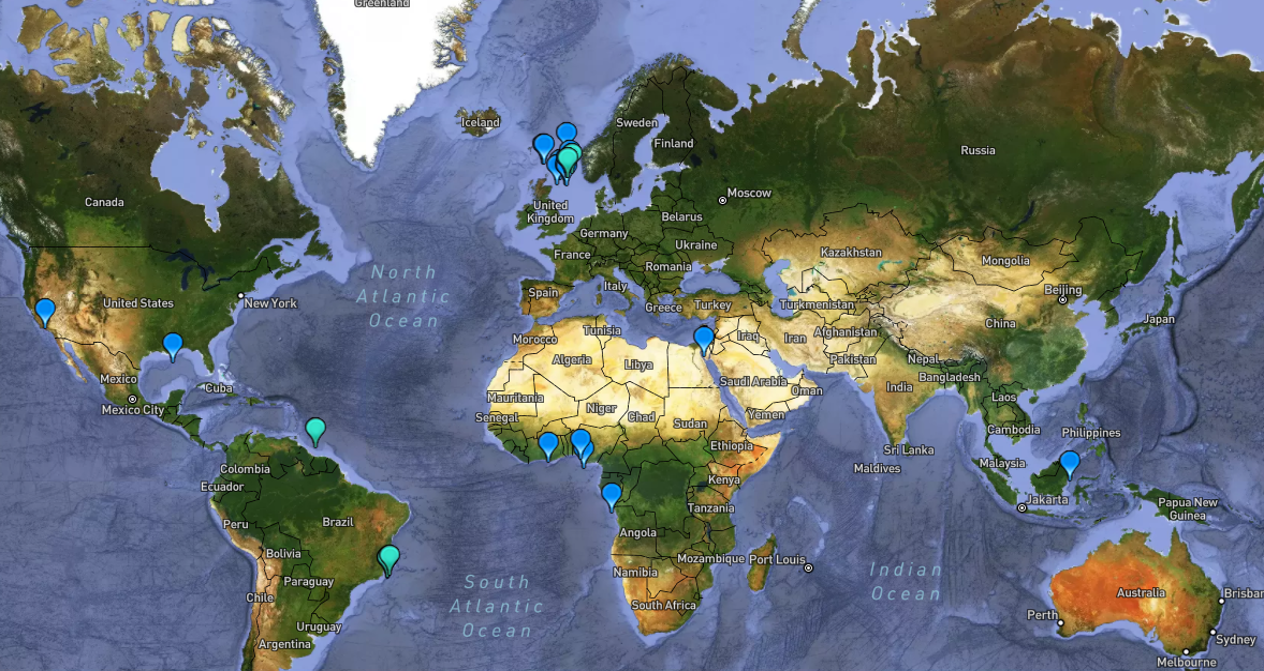
Figure 3 – Reservoir analogues for Zama Field. These are chosen based on availability of high-quality data and as representative of key characteristics of submarine fan play.
Analysis and Insights
Analysis and Insights
Insights on well spacing, well type and pattern, EUR per well, plateau annual recovery and recovery factor, which can aid in developing an optimal hydrocarbon recovery strategy, can quickly be gained by analyzing the probabilistic distribution of analogue data. Applicable global reservoir analogues show that the mean recovery factor achieved is 42%, but the upper range exceeds 60% (Table 3).
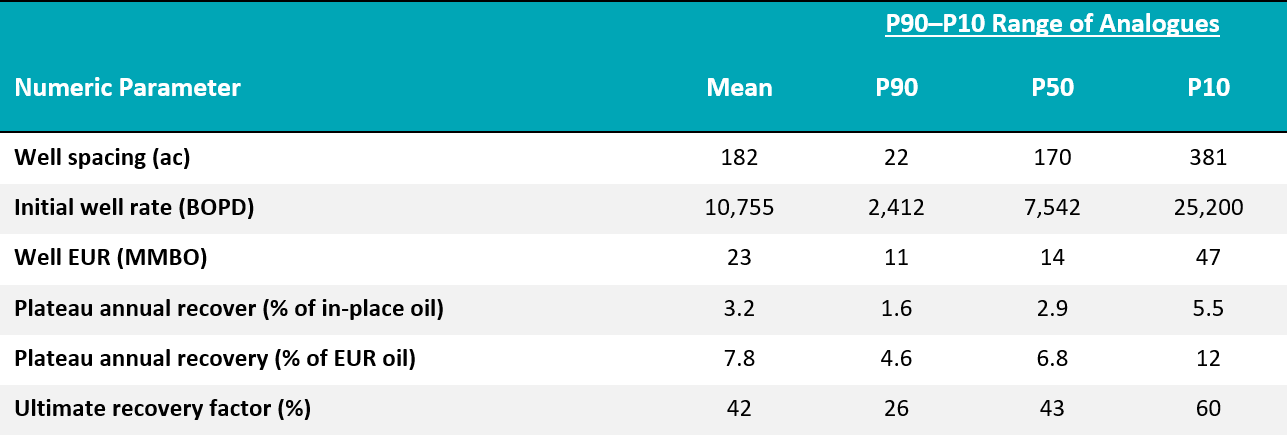
Table 3 – Reservoir analogues for Zama Field. These are chosen based on availability of high-quality data and as representative of key characteristics of submarine fan play.
Higher recovery factor tends to be associated with good air permeability, relatively thick net pay and lower viscosity. For those fields that have exceeded 50% ultimate recovery (e.g., Buzzard, Forties, Magnus, Miller and Nelson fields, UK and Namorado Field, Brazil), continuous water injection and conformance improvement techniques, such as water plugging, modifying injection pattern and profile modification, have proved to be effective in optimizing the recovery (Table 4). Benchmarking of recovery efficiency against Empirical Recovery Chart (Tong, 1988) demonstrates maximizing recovery efficiency during the low water-cut period (water-cut <25%) is critical to optimizing the ultimate recovery (Figure 4). All fields with higher than 50% recovery factor have adopted effective reservoir management practices, such as horizontal wells, sand control, artificial lift and well treatment (Table 4). Taking all these factors into account, there is a strong likelihood the published recoverable reserves of 400-800 MMBO may have significant upside.

Table 4 – Analogue characterization for the Zama development concept: reservoir management best practices for fields with >50% ultimate recovery factor.
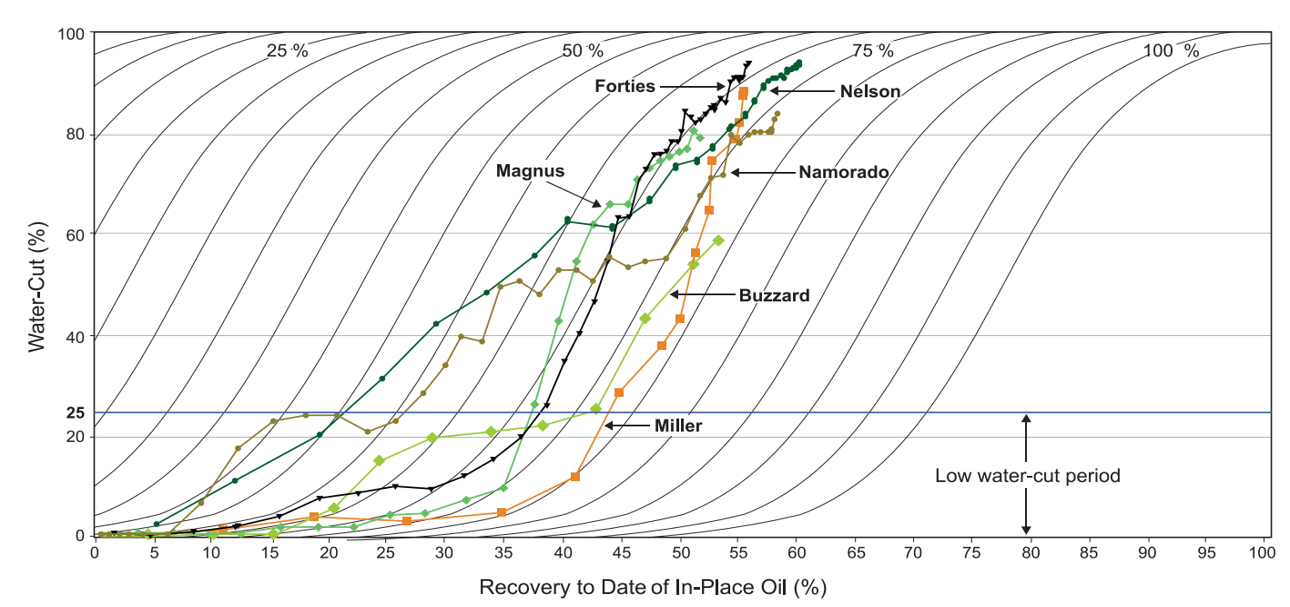
Figure 4 – Recovery efficiency against Empirical Recovery Chart (Tong, 1988) for the Zama development analogues with >50% ultimate recovery factor. Maximizing recovery efficiency during the low water-cut period is critical to optimizing the ultimate recovery.
References
References
Ambati, L., Shann, M., Alvarado, K., Guerra, B., Hernandez, X., Vazquez, K., Fakih, D., 2018. The Zama Oil Discovery: From a Collaboration of Detailed Seismic Reprocessing Integrated with a Geological Understanding of the Reservoir Play System, Trap and Seal Capacity. Conference Proceedings, First EAGE Workshop on Deepwater Exploration in Mexico: Foster collaboration to unlock potential, Volume 2018, p.1 – 5
MacEwan, I., 2019. The Zama discovery: subsurface uncertainty in exploration and appraisal, Petroleum Geology of Mexico and the Northern Caribbean Conference, 15 May 2019, London
Offshore Magazine, 2019. Talos provides offshore Mexico wells review. [Online] Available at: https://www.offshore-mag.com/drilling-completion/article/14071565/talos-provides-offshore-mexico-wells-review[Accessed 08 07 2020].
Offshore Technology, 2017. Zama Oilfield Development. [Online] Available at: https://www.offshore-technology.com/projects/zama-oil-discovery/[Accessed 06 05 2020].
Offshore Technology, 2020. Zama Oil Discovery. [Online] Available at: https://www.offshore-technology.com/projects/zama-oil-discovery/[Accessed 30 06 2020].
Premier Oil, 2017. Zama Prospect, Mexico video. [Online] Available at: https://media.investis.com/p/premier-oil/Premier%20Oil%20-%20Mexico%20Video%202017.mp4[Accessed 03 07 2020].
Premier Oil, 2019. Significant resource upgrade at Zama following conclusion of appraisal campaign. [Online] Available at: https://www.premier-oil.com/premieroil/media/press/significant-resource-upgrade-at-zama-following-conclusion-of-appraisal-campaign[Accessed 03 07 2020].
Talos Energy, 2018. Talos Energy News. [Online] Available at: https://www.talosenergy.com/news/default.aspx[Accessed 03 07 2020].
Talos Energy, 2020. TALOS ENERGY ANNOUNCES COMPLETION OF INDEPENDENT RESOURCE EVALUATION OF ZAMA DISCOVERY. [Online] Available at: https://www.talosenergy.com/news/press-release-details/2020/Talos-Energy-Announces-Completion-Of-Independent-Resource-Evaluation-Of-Zama-Discovery/default.aspx[Accessed 30 06 2020].
Tong, X.Z., 1988, Statistical rules of natural and artificial water drive reservoirs, in X.Z. Tong, ed., Analysis of Oil Well Production Performance and Reservoir Behavior: Publishing House of Documentation for Science and Technology (First Edition), Beijing, Chapter IV, p. 56-92.
